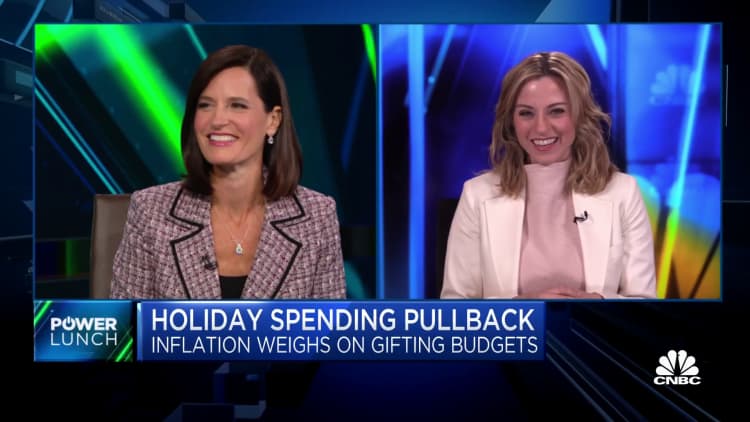Here’s the inflation breakdown for October 2022 — in one chart
People shop for bread at a supermarket in Monterey Park, California on Oct. 19, 2022.
Frederic J. Brown | Afp | Getty Images
Inflation was cooler than expected in October, although household staples like shelter, food and energy remained among the largest contributors to consumer prices still rising at a historically fast pace, the U.S. Bureau of Labor Statistics said Thursday.
Inflation measures how quickly the prices consumers pay for a broad range of goods and services are rising.
The consumer price index, a key inflation barometer, jumped by 7.7% in October relative to a year earlier — the smallest 12-month increase since January 2022. Economists expected a 7.9% annual increase, according to Dow Jones. Basically, a basket of goods and services that cost $100 a year ago costs $107.70 today.
The annual rate is down from its 9.1% pandemic-era peak in June 2022 and September’s 8.2% reading, but is hovering near the highest levels since the early 1980s.
“That’s obviously still very high,” said Andrew Hunter, senior U.S. economist at Capital Economics, of October’s reading. “But at least it’s a move in the right direction.”
A decline in the annual inflation rate doesn’t mean prices fell for goods and services; it just means prices aren’t rising as quickly.
More from Personal Finance:
Consumers cut back on holiday gift buying amid higher inflation
How to avoid Medicare scams during open enrollment
Here are pros, cons of owning cryptocurrency in a 401(k)
While the headline annual reading is generally easier for consumers to understand, the monthly change is a more accurate gauge of near-term trends (i.e., if inflation is speeding up or slowing down), economists said.
The CPI rose 0.4% from September, according to the BLS. Economists expected a 0.6% monthly increase.
“For the past year to 18 months, we’ve seen a lot of 0.4%, 0.5%, 0.6%,” Hunter said. “It’s the reason annual inflation has been so high.”
Consistent monthly readings in the 0.2% range would suggest inflation was under control, he said.
The ‘pervasiveness’ of price increases
A healthy economy experiences a small degree of inflation each year. U.S. Federal Reserve officials aim to keep inflation around 2% annually.
But prices started rising at an unusually fast pace starting in early 2021, following years of low inflation.
As the U.S. economy reopened, a supply-demand imbalance fueled inflation that was initially limited to items like used cars, but which has since spread and lingered longer than many officials and economists had expected.
“That’s the crux of the problem: the pervasiveness of inflation,” said Greg McBride, chief financial analyst at Bankrate.

Inflation was a top concern for voters heading into Tuesday’s midterm elections. An NBC News poll issued last weekend found 81% of respondents were either somewhat dissatisfied or very dissatisfied with the state of the economy — a level unseen since the 2010 midterms.
The typical U.S. household spends $445 more a month to buy the same items it did…
Read More: Here’s the inflation breakdown for October 2022 — in one chart
